Steal from the rich, and save for those upgrades.
Gangs of Sherwood answers the question of whether or not a character action game like Devil May Cry or Bayonetta could work as a four-player co-op experience. While the title lacks the pedigree of those influential studios, and especially their budget, Gangs of Sherwood still is quite enjoyable, if a bit too brief for the price. Still, a steampunk-tech retelling of these classic characters is nonetheless an interesting concept that is largely pulled off.
Throughout the seven hours it took for me to complete its campaign, Gangs of Sherwood reminded me a great deal of the AA output of a vast number of fantasy adventure games on the Xbox 360. From Arcania: Gothic 4, Risen, Hunted: The Demon’s Forge, Rise of the Templars, and The Cursed Crusade, there was a lot to choose from that scratched many an itch. While Gangs of Sherwood certainly benefits from advances in tech, offering stages of decent scale and draw distance, it still very much feels at home in that era, and while that may sound like damning praise, that is an era that I truly adored. Don’t get me wrong, Gangs of Sherwood does feel dated, almost as if this title was developed long ago and only recently released.
Gangs of Sherwood takes place over three acts, each comprised of three missions that are spread out across locations based on the classic tale. From the town of Locksley to Edwinstowe to Sherwood forest itself, all the way to Nottingham, each stage shows the advances that the Sheriff of Nottingham has made ever since he acquired the Lionheart, an object of great power he retrieved from the corpse of King Richard, a murder by his own hand. The Lionheart has allowed Nottingham’s technology to flourish in devastating ways, from siege towers to weaponized dirigibles. thus ensuring the Sheriff’s rule as he attempts to wipe out the revolution spearheaded by Robin Hood and his Merry Men.
The game’s story is told through two formats; mid-mission as the characters banter back and forth, all without moving their mouth that is, and through Alan-a-Dale’s puppet shows which can feel at odds with the game’s tone, especially as the puppet theatre is entertaining a group of adults, with not a single child in sight. These moments are played for a joke and are fun little moments, but I really wish the storytelling was more focused on what you were doing in the missions and how it really affects the characters and the world around you. You get moments of this in certain fights, such as the encounter with the Prioress, but we get so few of these moments that actually convey a story and not just a bunch of clever quips and hamfisted jokes.
As the title supports four players throughout all of its missions, you’ll take on the roles of Robin Hood, Friar Tuck, Little John, and Marion, each with unique skills and a great deal of customization on what upgrades, skins, and abilities you unlock. While the game is certainly designed around being a co-op experience, Gangs of Sherwood can be fully played as a single-player adventure, offering a completely offline mode, should you simply want to go it alone. That said, the few matches I was able to tackle in co-op ran without a hitch.
Each location you’ll visit is a fairly linear experience, only offering up different paths depending on the characters you select. Robin Hood and Marian can slip through tight spaces, whereas Friar Tuck and Little John can bypass heavier obstacles. These paths are small detours, usually hiding chests that either contain gold or artifacts that can provide perks available for that mission. These range from boosted defense or gaining health on each hit of your weapon. It gives each mission an interesting randomness to your build without feeling like a MOBA.
While each location has its fair share of combat encounters, the game’s set pieces lack moments to make them truly memorable. Usually, you’ll encounter enemies in large open areas or locations that scream ambush. And, as your foes start to appear, you’ll often be tasked with defeating the lot before you can continue. While you’ll often have secondary objectives like freeing captives or retrieving wanted posters, the bulk of your time in missions is simply beating up the bad guys and then taking on one of the Sheriff’s children at the end. While most of these encounters are pretty satisfying, especially the battle with the Prioress and her creation, a few bosses feel like slightly different versions of the same fight. Still, while these fights are nonetheless pretty decent, developer Appeal Studios shows several times throughout the campaign that they can simply do better.
When it comes to Robin Hood and his outlaw companions, combat is both engaging, and partially frustrating, but likely not in the way you are expecting. Each character feels very different from one another and has a decent depth to their offerings. The bulk of my time in Gangs of Sherwood was between Robin Hood and Marian, although I did try a few missions as Friar Tuck and Little John as well, with Little John simply not being that great to play. Each character has a signature weapon that defines their style, with Robin having his bow, Marian a sword and her daggers, Friar Tuck wielding a massive mace, and Little John having a mechanical arm that can unleash some pretty heavy hitting blows.
Each character has a basic combo string that makes them unique. Robin Hood can create a volley of Star Arrows that can seak out his opponent. This starts with a basic combo of RT, RT, RT to create Star Arrows. To activate them, he will need to generate a combo with Shining Arrows, this is done with RB, RB, RB, RB. You can also bypass the combo and just hold RB until the effect triggers, letting go of the shot and having the Star Arrows fly toward his target. This series of attacks is further enhanced as you upgrade Robin Hood himself. From volley storms to drill arrows, to sliding shots, and more, there is a decent variety of combo attacks to pull off, all based on variations of RB and RT.
Now, each character handles in a very similar way in having their own series of combo attacks. From Marian being able to stack magical daggers to then rapidly stab her opponents, charging up Friar Tuck’s fiery mace, to timing Little John’s powerful mechanical fist, each character brings something unique to combat, even if Little John feels a bit too slow in having to charge up his heat gauge to really be truly effective in combat. While he is fine to use in co-op, I simply found no fun with the character when I tried him on my own.
However, where combat becomes frustrating is that each succession of RB or RT has to be timed in a set rhythm to pull off each attack. Press the buttons too quickly and you'll wiff each advance, press it too slowly and the same thing occurs. Each combo has almost too slow of a pattern to pull off, creating a mess of failed combo attacks when you trying to dodge enemies of all shapes and sizes. That said, when you do find that rhythm and can pull off those combo attacks, combat is very fun, it just could have been so much more had the speed of the button presses been either faster or had a more generous window. Each combo string for the cast is fairly satisfying, but the means to pull them off can sometimes just not feel terribly great.
Alongside your combo attacks, which you’ll be graded with everything from Classy to Savior, you’ll also have a few additional avenues of moves to pull off. Each character will have a Rebel Instinct gauge. This charges up through combat and allows you to trigger it to grant a burst of power and other perks while it is active. This can come in handy to heal when needed or when you really need to drop a boss fairly quickly. One aspect of the Rebel Instinct I really like is that you can cancel it at any time, saving up what is left of the meter for future use.
To aid in traversal, each character has a whip-like grappling hook that allows you to lasso yourself onward and upward to anywhere an icon is present. You can eventually upgrade your skills to lasso enemies that are airborne, giving you some pretty novel moments that start to really make the character action moments of this game sing. Honestly, if we get a sequel, this is one aspect of the game that I really want to see fleshed out and improved as it can feel a tad underused in its current state. Characters also have a double jump, but the forward thrust you have can make platforming a tad more complicated than it should have been. Had the thrust been half of what it is, then it would have made traversal a hundred times better.
Lastly, the characters all have finisher attacks. These are essentially moves that can be pulled off when an enemy is at a certain health threshold. And as a callback to artifacts, there is an artifact that can increase that threshold, making it easier to pull these off. Why takedowns are so important as they are a solid way to build up your cash flow. While trouncing enemies and opening chests are reliable sources of income, each takedown can generate you extra coin by rapidly pressing the RB button during the animation. This is on top of each takedown being a pretty decent animation of its own, I just wish there were more variations to prevent it from being stale after the first dozen times you pull it off.
Gold becomes a pretty useful resource as you’ll use it to upgrade each character when you return to Major Oak, the base of operations for the group. As gold is tied to each character, you cannot simply burn through levels as Robin Hood and expect to spend it all on Marian. Gold can be used to purchase new techniques, which add to your combo repertoire, to more artifact slots, and to increase the size of your Rebel Instinct gauge. Additionally, you can customize your key abilities by tweaking how they work through what are called shards. Your light and heavy attacks, Rebel Instinct, and Rebel Ability can all be customized through three distinct skills and replaced, but for a considerable amount of coin.
While there is a great deal of customization for each character, I don’t feel the game has the content to really pull it off. There are 9 main missions on the map, not including the first mission that has you saving Alan-a-Dale, as well as Tyrant’s pit, which has you taking on three of the game’s better boss encounters back to back, as well as The Last Stand, which is a survival mode that has you taking on encounters until you perish. Lastly, there is an out-of-place boss encounter called Assault on the Ram that is one of the game’s best encounters, it’s just a bizarre seperate fight that would have been better suited to be part of the campaign as it is actually a very well-designed encounter.
Still, these thirteen options are the same experience each time you dive in. The main missions are fine enough as they are, but even taking them on again in co-op or with another character has a certain limit on how much you want to digest the same content ad nauseam to simply unlock new skins or fully flesh out the entire roster. Had there been more missions or additional modes or fights such as the Ram, then I could see a better reason to really stick around and continue to grind away at gold. While Gangs of Sherwood is not a standard live service game, it has elements here that certainly act like one. Appeal Studios has stated they don’t have plans for a season pass or anything of the sort and are more inclined to just release content packs later on, giving players more to do with their leveled-up characters.
Visually, Gangs of Sherwood is fine for what it offers, but not everything impresses, especially given the price tag. While it has all the hallmarks of a budget release, the game’s rather short length I don’t feel satisfies the $50 price tag, let alone the Lionheart Edition for $10 more. Most environments do look pretty good, but apart from some of its enemy types, the human cast of Robin Hood and his allies look considerably last-generation, or even earlier. Faces don’t animate well, or really even at all, some textures are flat, NPCs have zero voice acting, and while you’ll have some moments that do look rather great, the budget of Gangs of Sherwood can certainly be seen.
While I’ve read that the game runs at 60fps in gameplay and 30fps in cutscenes, the act of aiming in gameplay had that 30fps feel, especially as you try to line up an arrow with Robin Hood to the cages that hold the captives, having your cursor have this incredibly janky feel. Another issue I ran into with Gangs of Sherwood is that there are barely any settings or options whatsoever. From zero accessibility to even something as simple as subtitles, Gangs of Sherwood is incredibly basic in this regard.
Gangs of Sherwood certainly shows its limitations, some that are more apparent than others, but its overall experience is still one I did find enjoyment from, despite its brief length for the type of game it is attempting to be. While it doesn’t clutter up that time with needless loot, it has plenty of abilities to purchase, characters to engage with, and skins to unlock. While I could see myself playing through the campaign again with the right group of players, I certainly feel a level of finite enjoyment with retreading through the same locations over and over again. While I could easily recommend it at a much cheaper price, Gangs of Sherwood is nonetheless a pretty decent affair that takes an old classic tale and injects a bit of fun magic-tech into it, creating an interesting experience through its alternative history scenario.
Developer - Appeal Studios. Publisher - Nacon. Released - November 30th, 2023. Available On - Xbox Series X/S, PS5, Windows. Rated - (T) Violence, Language, Blood.
Platform Reviewed - Xbox Series X. Review Access - A review code for the game was provided by the publisher for the purpose of this review.


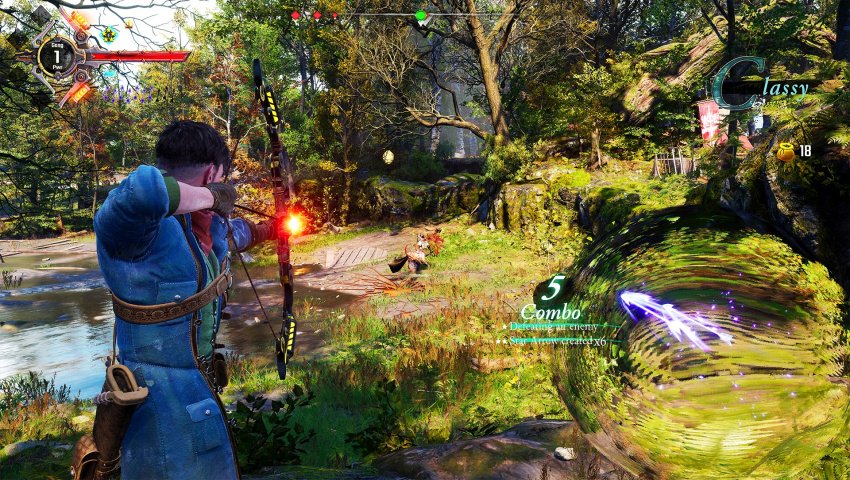
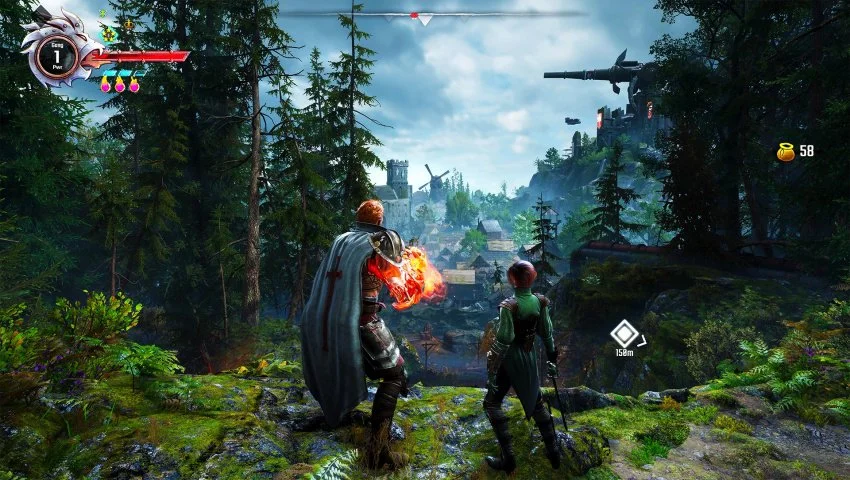
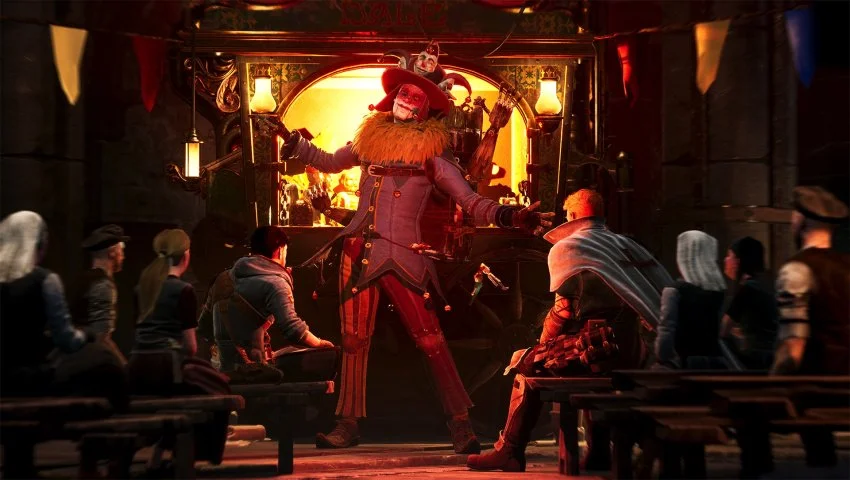
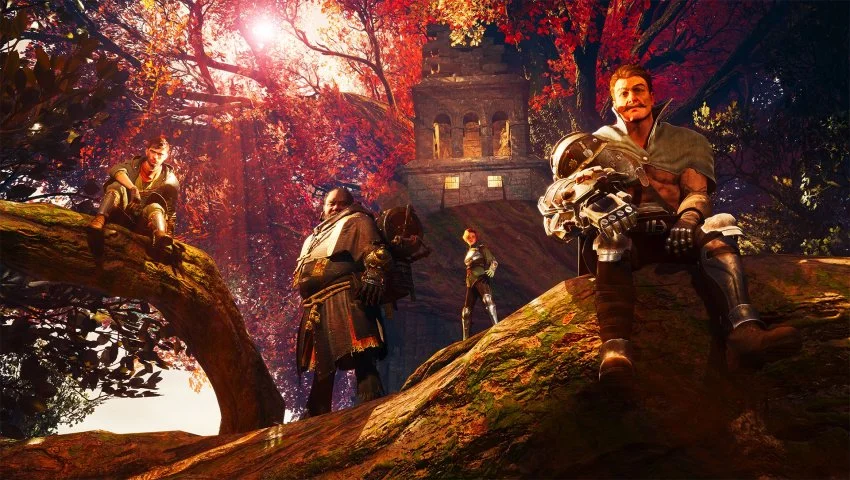

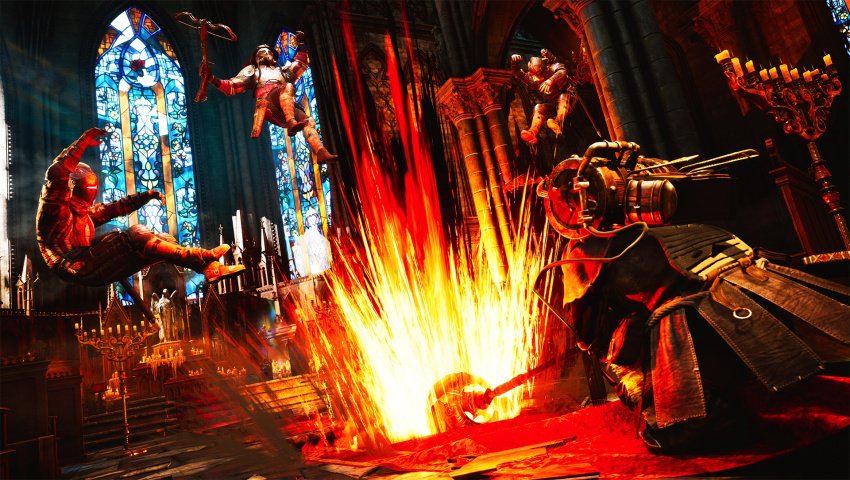





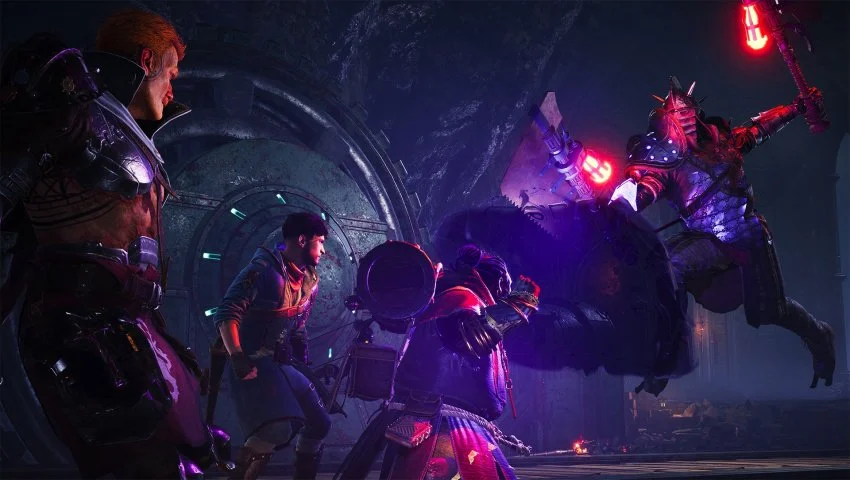
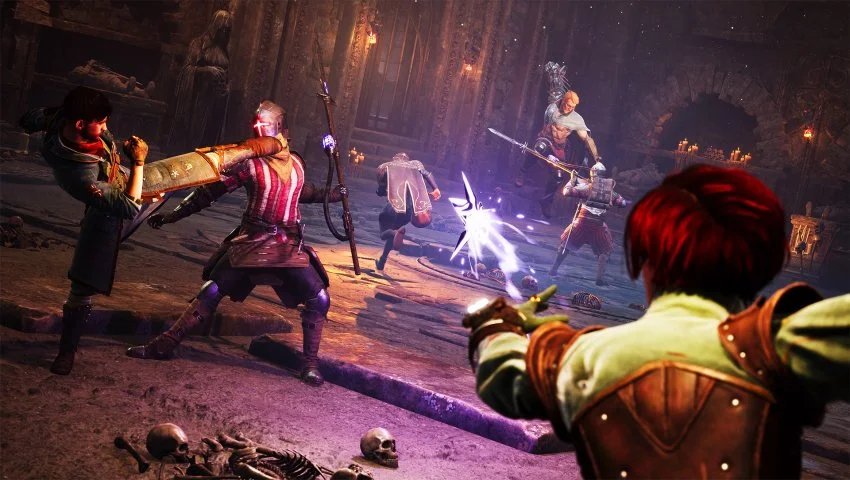



Jeff is the original founder of Analog Stick Gaming. His favorite games include The Witcher III, the Mass Effect Trilogy, Hi-Fi Rush, Hellbade: Senua’s Sacrifice, and the Legend of Heroes series, especially Trails of Cold Steel III & IV.